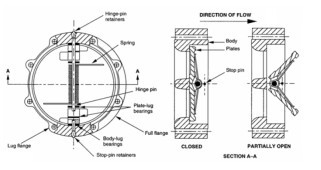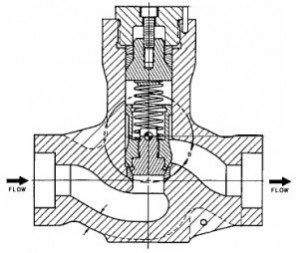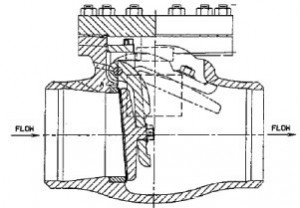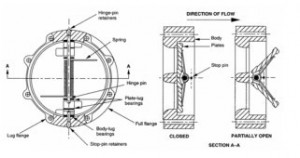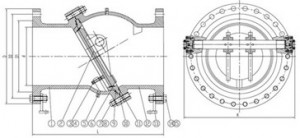Nome do produto: Válvula de balanço (swing type check valve)
É geralmente apareceu com dupla flange da válvula de verificação do balanço, uma válvula de retenção tradicional, tem aplicação extremamente ampla. É simples e confiável, o que significa que a tecnologia é bastante maduro e estável, fácil de reparar. API válvula de swing e balanço DIN válvula adotar disco diferente pendurado estrutura.
Standard e escopo:
Tamanho: NPS 2 “~ 36” DN50 ~ DN900 Avaliação da pressão: Classe 150 ~ 2500 PN2.5 ~ PN100 Conexão: face aumentado, Soldar, face Anel conjunta, face Masculino, Feminino rosto, solda de soquete e assim por diante Material: aço carbono, aço inoxidável, liga e assim por diante Projeto e Fabricação: ASME B16.34 e API 6D, BS EN 1868, DIN 3840 Inspeção e teste: API 598 ou API 6D, BS EN12569 Dimensão final flange: ASME B16.5 (NPS para ≤ 24); ASME B 16,47 série B (o nosso padrão normal), API 605 ou ASME B16.47 série A, MSS SP-44 (para NPS> 24; BS EN 1092 – 1 BW dimensão final: ASME B16.25 Soldadas-dimensão: ASME B16.11 De ponta a ponta: ASME B16.10, BS EN 558-1, DIN 3202, ISO 5752 TEMPERATURA E PRESSÃO: ASME B16.34 Dimensão da parede espessura: API 600 e BS 1868, API603 Característica de projeto Assento Para o carbono válvula de retenção de aço swing, o assento é normalmente de aço forjado. A superfície de vedação da sede de pulverização é soldada com liga dura exigidas pelo cliente. Sede roscada renovável é usado para NPS ≤ 8 válvulas, e soldados no assento também pode ser opcional se a ser solicitado pelo cliente. Soldado no assento é usado para NPS ≥ 10 carbono válvulas de aço.Para Válvula de aço inoxidável de verificação, assento integral é usualmente adotados, ou para soldar liga dura diretamente integralmente. Rosqueado ou soldada no lugar também é opcional para válvula de aço inoxidável de verificação, se necessário.
Corpo-a-Bonnet Conjunto: Junta
Aço inoxidável + de grafite flexível feridos é usado para Class150 e Class300 válvula de retenção; aço inoxidável + de grafite flexível feridos é usado para Class600 válvula de retenção, e junta conjunta também é opcional para Class600 válvula de retenção; junta anel comum é usado para Class900 válvula de retenção , projeto do selo de pressão é usado para Class1500 ~ Class2500 válvulas de retenção.
Conexão corpo e capota
O corpo ea capota de Class150 ~ Class900 válvulas de retenção são normalmente conectados com pregos e porcas. E o corpo e tampa de Class1500 ~ Class2500 válvulas de retenção são geralmente do projeto Selo de pressão.
